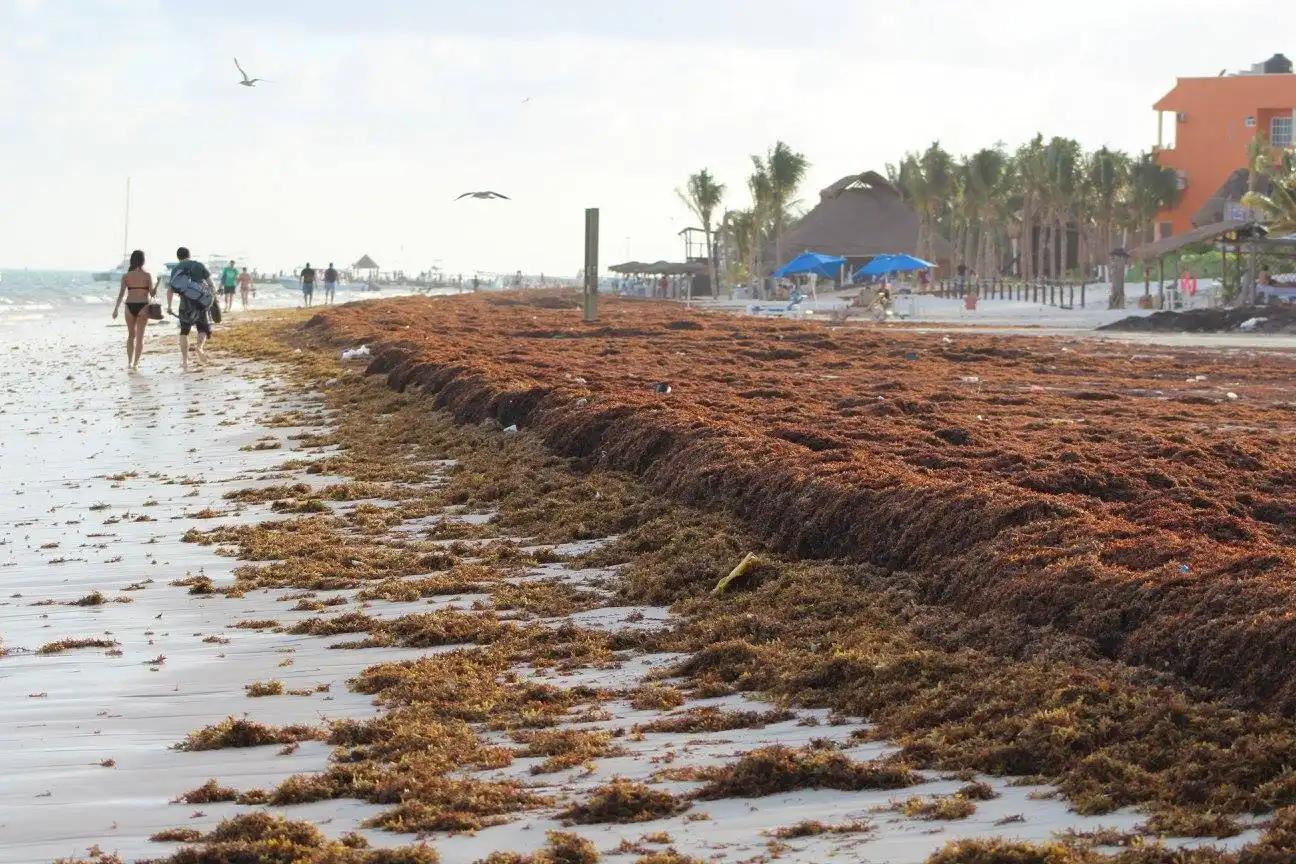
Having grown up near the coastline, I’ve become accustomed to encountering Sargassum either drifting on the water’s surface or washed ashore along the beach. The presence of Sargassum and various other seaweeds and plants has always been a natural part of the marine and coastal environment. However, the unprecedented influx of Sargassum into the Great Caribbean region since 2014, along with its resulting consequences, has sparked significant concern. Researchers are currently engaged in studies to comprehend this phenomenon and determine effective strategies for managing it – a challenging endeavor, to say the least. I had the privilege of attending a presentation by a senior researcher from Mexico’s National Autonomous University (UNAM), an expert in seagrasses and tropical marine vegetation. Her enlightening talk at a local Planetarium provided answers to many of my inquiries, and I’m eager to share these insights with you.
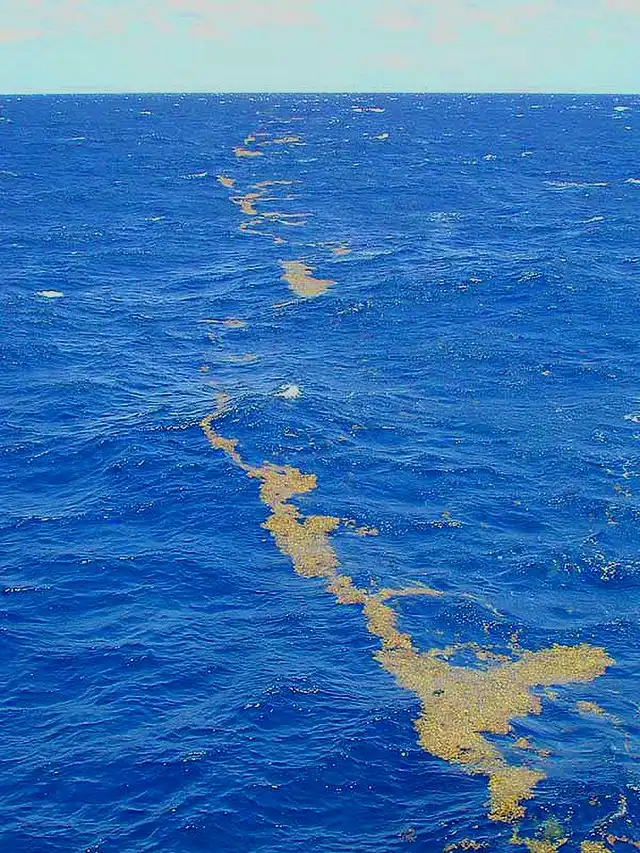
It’s recently come to my attention that the surge of Sargassum has brought about a fundamental shift in the dynamics of crucial coastal ecosystems within our region. Consequently, it’s imperative for all of us to delve deeper into this issue if we wish to continue relishing the beauty of our beaches and reefs in the future. The matter at hand extends beyond mere aesthetic concerns posed by tourists encountering beaches cluttered with brown-colored algae. I once believed that the impact of Sargassum on tourism stemmed from the unappealing appearance it lends to the beach, which can hinder visitors’ enjoyment. However, I’ve come to understand that the issue runs much deeper and more complex than the temporary inconvenience faced by vacationers during their Caribbean getaways. We’re now grappling with a significant environmental predicament that won’t be resolved overnight. In fact, this might be a challenge that our future generations, including those yet to be born, will have to address. If you’re eager to expand your knowledge, please read on.
Sargassum introduction: Sargassum is a type of algae that primarily inhabits the ocean’s surface, spending a significant portion of its lifecycle drifting along currents. Unlike other forms of algae, Sargassum doesn’t originate from the seabed. Instead, it reproduces and thrives while being carried by ocean currents, floating in the water column until it reaches the shoreline. There, it’s typically carried back into the sea by the movement of waves and currents, undergoing cycles of drying, decomposition, and return to the water.
Within the Caribbean, we encounter two main types of Sargassum: Sargassum natans and Sargassum fluitans. At a glance, these two species appear remarkably similar to an untrained eye.
Sargassum: The Dual Nature, In open ocean environments, large Sargassum accumulations form as currents converge, creating floating “islands” of this algae. These accumulations are held together within gyres – circular currents generated by wind patterns. Within a gyre, surface water is propelled in circular motions, effectively trapping floating matter within its confines. You might have heard of the Sargassum Sea, a location where substantial quantities of Sargassum congregate. Under normal circumstances, Sargassum remains within these gyres, occasionally venturing beyond their boundaries. As such, Sargassum had been observed in the Gulf of Mexico even before the surge we’ve witnessed in the Caribbean since 2014. However, the massive influx of Sargassum into the Caribbean during this period cannot be attributed to the Sargassum Sea. More details on this will follow shortly.
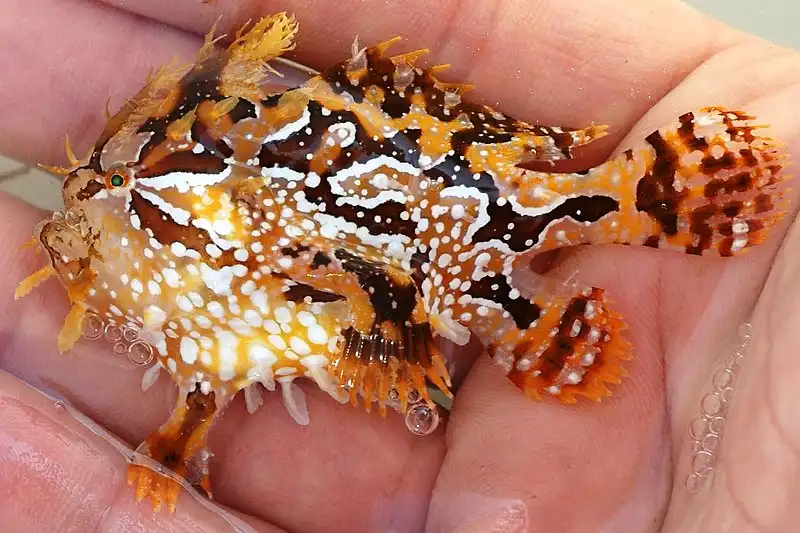
sargassum fish, anglerfish, or frog fish (Histrio histrio) Credit: SEFSC Pascagoula Laboratory; Collection of Brandi Noble, NOAA/NMFS/SEFSC Source: https://creativecommons.org/licenses/by/2.0/
These Sargassum masses harbor a rich ecosystem, providing shelter and sustenance for numerous species. Juvenile fish seek refuge among the drifting Sargassum, while crabs and other crustaceans accompany these floating habitats, procuring food and a suitable environment. Turtle hatchlings also benefit greatly from Sargassum, as it offers them a haven during their initial years in the ocean, ensuring access to food, shade, and protection.
The Dark Side of Sargassum: In recent years, the Caribbean has experienced an unprecedented inundation of Sargassum. This phenomenon has affected the entire Caribbean region, spanning the coastlines of Central and South America and even reaching Africa. The vast quantities of Sargassum washing up on once pristine white beaches have been met with astonishment and concern, affecting tourists, locals, governments, industries, scientists, and the media. This sight was truly unlike anything anyone had ever witnessed before, despite our prior familiarity with Sargassum. Swift action was taken to remove the accumulating algae, but the sheer magnitude of the challenge quickly became apparent. Due to the delicate nature of coastal ecosystems, manual removal was the preferred method, requiring countless hours of labor by dedicated individuals. Yet, despite these efforts, Sargassum continued to accumulate, leaving us feeling overwhelmed and uncertain.
This peculiar transformation of a seemingly beneficial alga into a formidable challenge raises a crucial question: how does a substance that contributes positively to the environment, as previously described, suddenly become a pervasive issue that disrupts our lives and triggers a mix of concern and helplessness? As Brigitta van Tussenbroek aptly puts it: “An excess of Sargassum is detrimental to the environment, just like any excess. Excess of sugar is bad. Excess of Sargassum, is also bad.”
Immediate Ramifications of Sargassum Invasion As Sargassum accumulates near coastlines, it interfaces with thriving marine ecosystems, including seagrass meadows and coral reefs. This accumulation triggers a noxious odor and releases hydrogen sulfide, a foul-smelling gas.
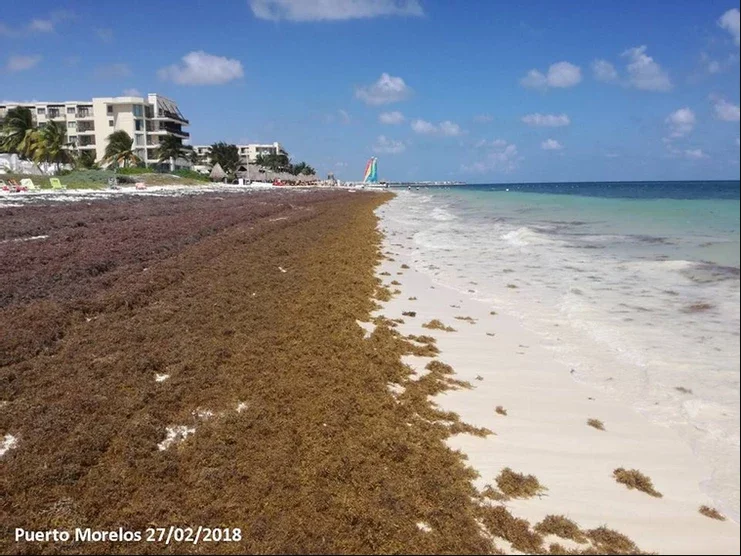
The presence of substantial Sargassum masses can disrupt turtle nesting grounds and hinder the journey of hatchlings from their nests to the sea.
Beach erosion becomes a significant concern as the structure of reef lagoons is altered, seagrasses suffocate under the weight of Sargassum, and the equilibrium of beach ecosystems is disrupted.
Seagrasses play a pivotal role in stabilizing sediment and preventing sand erosion. However, as Sargassum smothers seagrasses, the loss of this critical vegetation can lead to sand displacement and rising water levels, exacerbating beach erosion – a phenomenon we’ve observed with increasing frequency.
Sargassum’s decomposition process emits gases that, when concentrated, can lead to respiratory issues among humans.
The very presence of Sargassum obstructs sunlight penetration into the water, impeding photosynthesis in numerous organisms. This disruption curtails oxygen production, which is crucial for sustaining marine life.
Impact on Other Species The Sargassum influx takes a toll on various forms of marine life. Seagrasses, which require light for photosynthesis, suffer as expansive Sargassum accumulations block sunlight. Consequently, these seagrasses can’t generate the oxygen they typically release during the day, disrupting the well-being of surrounding organisms, including humans.
Seagrasses are known to produce oxygen during the day but consume it at night due to the absence of sunlight. Lengthy Sargassum cover deprives seagrasses of essential light, leading to a scenario where they consume oxygen at all times. In such a “nighttime” environment, seagrasses contribute to oxygen depletion, along with the bacteria involved in Sargassum decomposition. This can lead to an apoxic state, characterized by low oxygen levels and a putrid smell – an experience familiar to recent visitors to Caribbean shores.
While mobile organisms, such as fish, can relocate to less oxygen-deprived areas, immobile species like seagrasses face severe consequences. The persistent presence of Sargassum can lead to the death of entire seagrass meadows. Algae, being more adaptable, seize the opportunity to expand in environments where seagrasses falter, exacerbating the demise of these vital ecosystems.
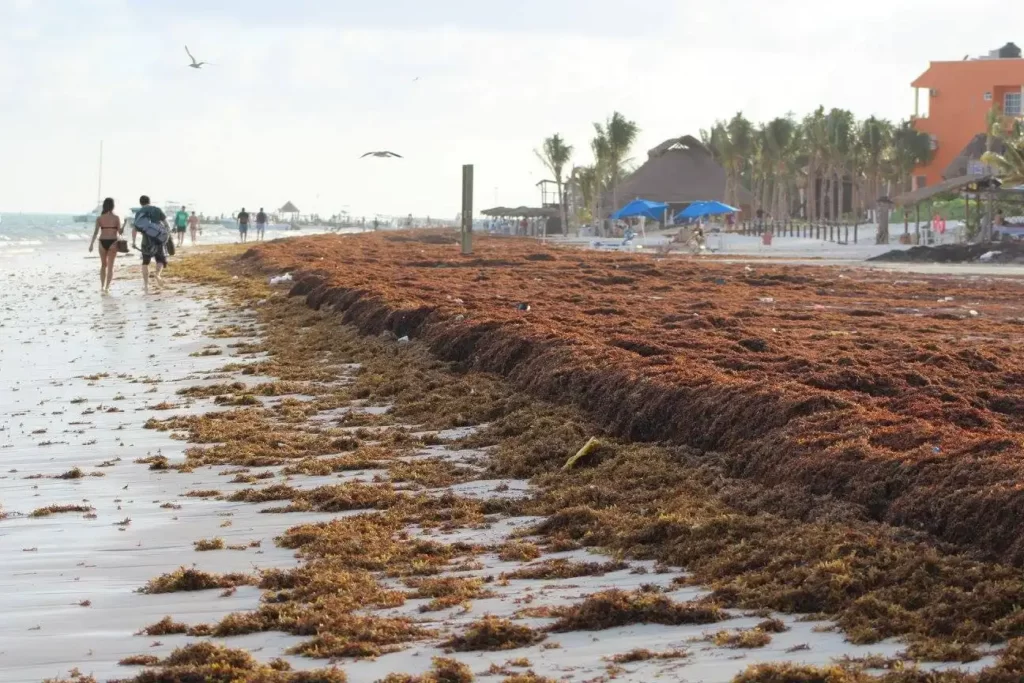
The Ripple Effect: Environmental and Economic Implications The repercussions of massive Sargassum influx extend to various levels of marine ecosystems. Seagrass meadows, apart from providing critical habitat and sustenance for marine life, serve as a critical connection between oceans and coral reefs. These ecosystems foster an interdependent relationship among species, including those that depend on reefs for their survival.
As Sargassum accumulates along coastlines and begins to decompose, it releases excessive amounts of nitrogen and phosphorus – nutrients essential for marine life, but only in controlled quantities. This nutrient overload disrupts the delicate balance of marine ecosystems, exacerbating an already compromised situation. In particular, seagrass meadows that border coastlines become vulnerable, as the surge in nutrients leads to overgrowth of algae and alters the composition of these habitats.
Seagrass meadows play pivotal roles in the lives of numerous species, including turtles, manatees, and various fish – many of which are of significant economic importance, supporting industries like fisheries and tourism. The demise of seagrass meadows would disrupt food chains and endanger the health of coral reefs, culminating in economic setbacks as these industries suffer.
The Complex Road to Recovery The restoration of seagrass meadows and the reestablishment of ecological equilibrium is a daunting task. According to Dr. Brigitta van Tussenbroek, it could take a minimum of 10 years to rehabilitate the affected environments, and in severe cases, this process might extend up to 50 years. The most alarming prospect is the potential for irreparable damage, where seagrass meadows are lost forever. This predicament underscores the significance of the crisis we face, extending far beyond short-lived tourist inconveniences. The potential ramifications for the Mexican Caribbean are profound – we could witness the long-lasting impact of a problem that, if unaddressed, might result in irreversible damage to these vital habitats.
Dr. van Tussenbroek’s assessment resonates: we are merely at the outset of our journey in comprehending and responding to the Sargassum crisis. Four years following the initial surge, the challenge continues to evolve, and effective solutions remain elusive.
Additional Insights into Sargassum Sargassum is characterized by rapid growth, capable of doubling its biomass in just seven days. Experimental evidence shows the remarkable expansion of the sargassum collected in the enclosures, doubling in weight in the space of just one week.
Contrary to popular belief, Sargassum in the Caribbean doesn’t originate from the Sargassum Sea. Detailed studies utilizing satellite imaging and other technologies have traced the journey of Sargassum back to the coasts of Brazil, where a newly identified “Small Sargassum Sea” has emerged. Carried northward by ocean currents and propelled by wind and waves, Sargassum embarks on a lengthy voyage through the Great Caribbean before reaching our shores, even crossing the Yucatan Channel into the Gulf of Mexico.
While we lack precise predictions for the future, it’s evident that the surge in Sargassum, along with other pressing environmental concerns, is intricately linked to the global changes brought about by climate change.
The term “Golden Tide” describes a healthy Sargassum environment in the water column. However, the term “Brown Tide” has emerged as a less poetic description for the presence of Sargassum, particularly following the events witnessed in the Caribbean.
Addressing Misconceptions Contrary to some misconceptions, Sargassum doesn’t transform into sand. The process of sand production in the Caribbean primarily involves organic materials like crushed coral, shells, and skeletal remains. Sargassum does not contribute to this sand production process.
While Sargassum itself is not harmful, some microorganisms that inhabit it may trigger skin reactions or rashes. However, these responses stem from the organisms within Sargassum, rather than the algae itself.
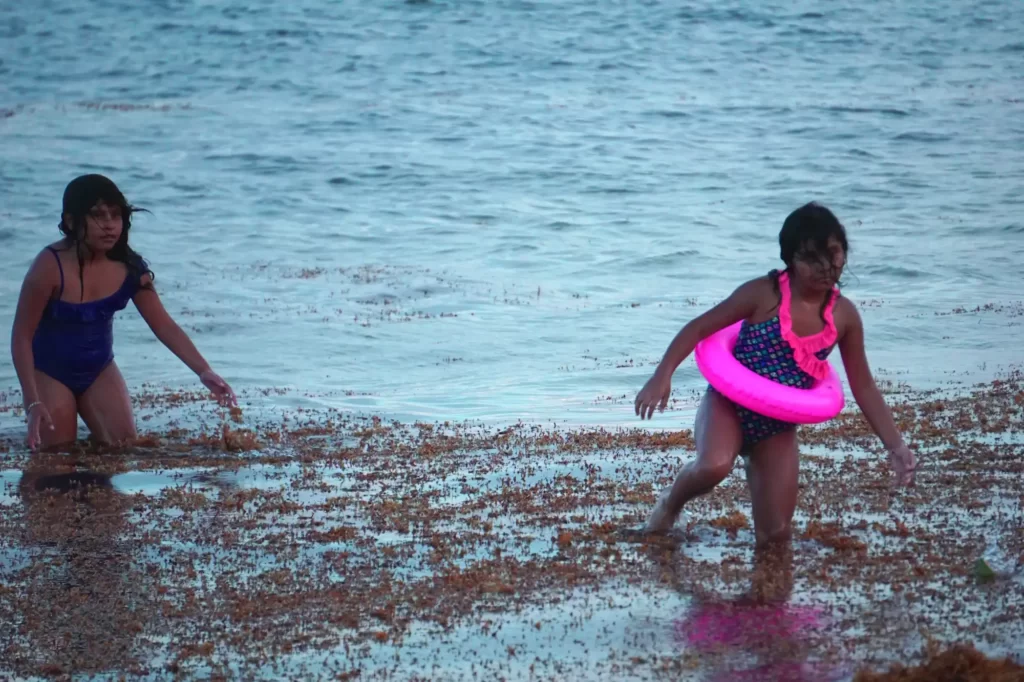
Seeking Reliable Information I trust that I’ve addressed several inquiries you might have had about Sargassum. In our quest for reliable information, it’s worth noting that Mexico’s National Autonomous University (UNAM) has been conducting extensive research on marine sciences since 1981, specifically focusing on Sargassum and its impact on marine environments, particularly seagrass meadows. I had the privilege of gaining insights from Dr. Brigitta van Tussenbroek, an esteemed senior researcher who has been studying seagrasses since 1990. Her expertise sheds light on the significance of collaborative efforts between government, industries, and research institutions to formulate holistic solutions and anticipate the challenges posed by our changing environment.
In Conclusion
The unprecedented influx of Sargassum presents us with a multifaceted challenge that goes beyond surface appearances. It underscores the delicate balance of marine ecosystems, the vulnerability of vital habitats like seagrass meadows, and the interconnectedness of species that rely on these environments for sustenance and survival. As we confront this complex issue, we must recognize the urgency of our actions and the potential long-term consequences. Our response to the Sargassum crisis is not just about safeguarding picturesque beaches for tourists but entails safeguarding the health and resilience of ecosystems that sustain life, support economies, and define the very essence of the Caribbean coastline.
